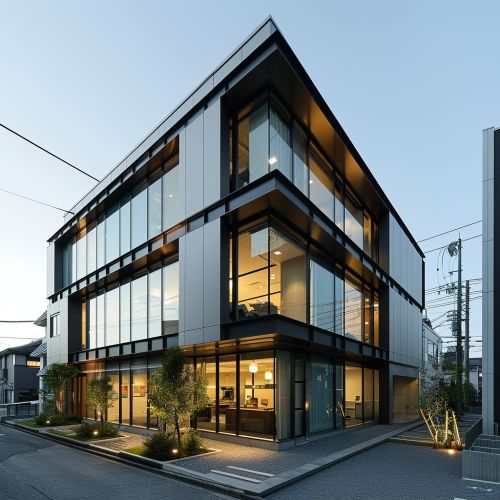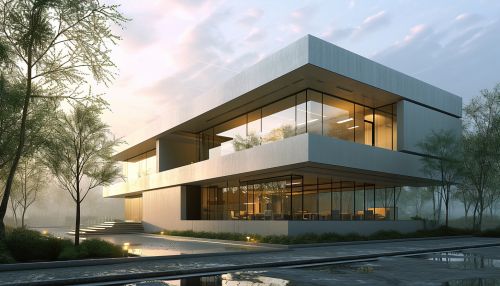Function-focused architecture
Overview
Function-focused architecture is a design approach that prioritizes the functionality of a building or structure over its aesthetic appeal. This architectural style is rooted in the belief that the primary purpose of architecture is to serve the needs of its users, and therefore, the design of a building should be primarily driven by its intended function. Architectural designs that follow this approach are often characterized by simplicity, efficiency, and practicality.


History
The concept of function-focused architecture can be traced back to the early 20th century, when architects began to challenge traditional design principles that emphasized ornamentation and aesthetics. This shift in thinking was largely influenced by the industrialization and rapid urbanization that occurred during this period, which necessitated the construction of buildings that could accommodate new types of functions, such as factories and office buildings.
One of the most influential movements that championed function-focused architecture was the Modernist movement, which emerged in the early 20th century. Modernist architects, such as Le Corbusier, believed that form should follow function, and they sought to design buildings that were simple, efficient, and devoid of unnecessary ornamentation.
Principles
The primary principle of function-focused architecture is that the design of a building should be primarily driven by its intended function. This means that the layout, structure, and materials used in a building should be chosen based on how well they serve the building's purpose.
For example, in a function-focused office building, the layout might be designed to facilitate efficient communication and collaboration among employees. This could involve the use of open floor plans, flexible workspaces, and strategically placed meeting rooms. Similarly, the materials used in the building might be chosen for their durability and ease of maintenance, rather than their aesthetic appeal.
Another key principle of function-focused architecture is simplicity. Function-focused designs often avoid unnecessary ornamentation and complexity, favoring clean lines and simple forms. This simplicity is not only aesthetic, but also practical, as it can make buildings easier to use and maintain.
Examples
Function-focused architecture can be seen in a wide range of building types, from office buildings and factories to schools and hospitals.
One notable example of function-focused architecture is the Farnsworth House, designed by Ludwig Mies van der Rohe. This house is characterized by its simple, rectangular form and open floor plan, which were designed to facilitate a close connection with the surrounding nature.
Another example is the Centre Pompidou in Paris, designed by Renzo Piano and Richard Rogers. This building is notable for its exposed structural and mechanical systems, which were placed on the exterior of the building to maximize the flexibility of the interior spaces.
Criticisms
While function-focused architecture has been praised for its practicality and efficiency, it has also faced criticism. Some critics argue that this approach can result in buildings that are sterile and lacking in character. Others suggest that the focus on function can sometimes overlook the emotional and psychological needs of building users.
Despite these criticisms, function-focused architecture continues to be a popular design approach, particularly in the design of commercial and institutional buildings.
